Dive into the intricacies of Leghorn chicken care, learning optimal practices for raising these majestic birds. From tailored feeding regimens to maximizing egg production, explore the nuances of Leghorn chicken breeding, ensuring a robust and healthy flock. Design the perfect Leghorn coop with precision, addressing health concerns through effective vaccination strategies.
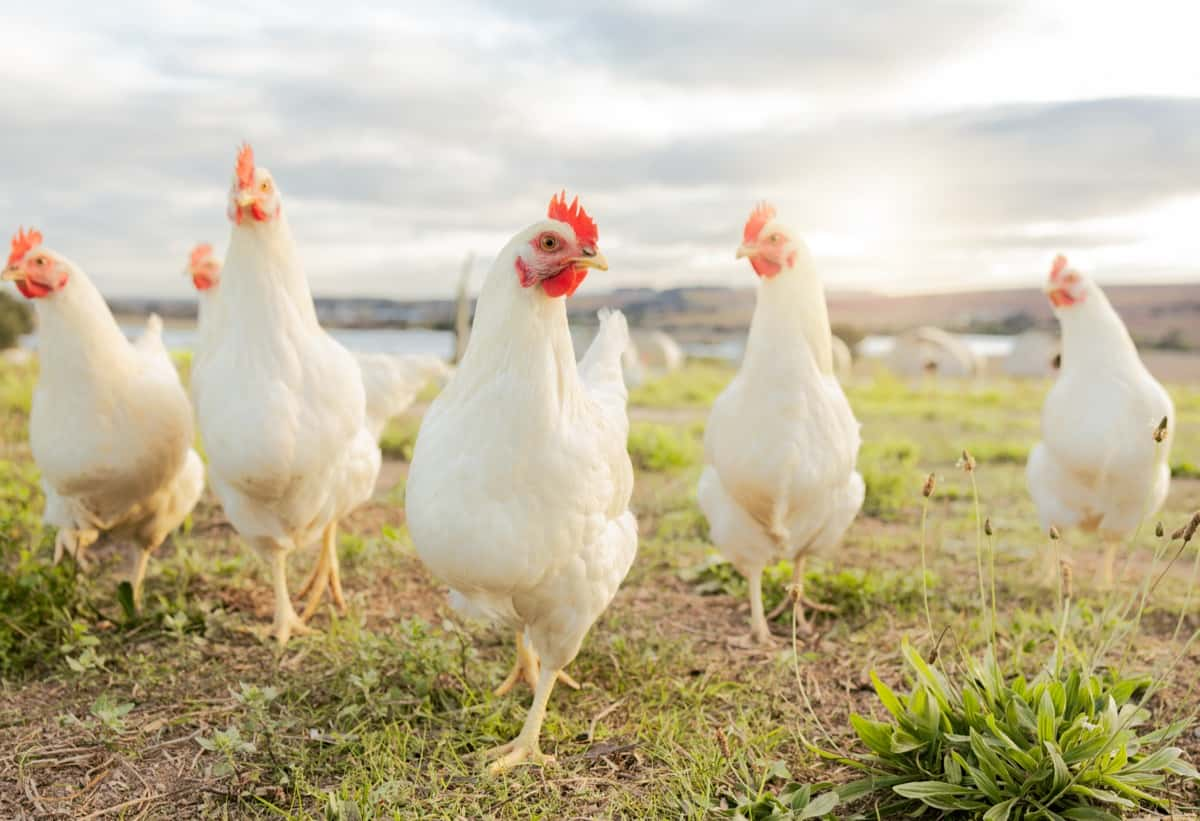
Navigate molting phases with finesse and discover nutritional insights and enticing treats for thriving Leghorn chickens. Conquer seasonal challenges with dedicated winter and summer care tips.
Raising Leghorn Chickens
Introduction to Leghorn Chickens
Leghorn chickens are a breed of poultry that originated in Tuscany, Italy, near the port city of Livorno. They were first exported to North America in 1828 and became popular for their excellent egg production and adaptability to different climates. Leghorn chickens come in various colors, such as white, brown, and black, and have a distinctive upright posture, white feathers, and red comb and wattles.
The History and Origin of Leghorn Chickens
Leghorn chickens are believed to be derived from light breeds of rural Tuscany. The name Leghorn is an anglicized version of Livorno, the port from which the first birds were shipped to America. They were initially called “Italians,” but by 1865, they were known as “Leghorns.” The breed was introduced to Britain, United States in 1870 and, from there, re-exported to Italy. Leghorns have been improved over the years by cross-breeding with other breeds, such as Minorca and Malay, to increase their size and egg-laying abilities.
Understanding the Popularity of Leghorn Chickens in Modern Poultry Farming
Leghorn chickens are a popular poultry breed known for their prolific laying of large white eggs, averaging 280 to 300 per year. They are hardy, resilient, and active, making them suitable for both backyard and commercial poultry farming. Leghorn chickens can be kept in confinement as long as sufficient space and roosting spots are available.
Choosing Your Leghorn Chickens
Leghorn chickens, originating from Italy, are a popular breed known for their high egg production and adaptability to different climates. They have white earlobes, yellow legs, red combs and wattles, and soft feathers. They come in various colors and are active, hardy, and efficient foragers.
In case you missed it: How to Raise Buff Orpington Chickens: Guide for Egg Laying, Breeding, and Care
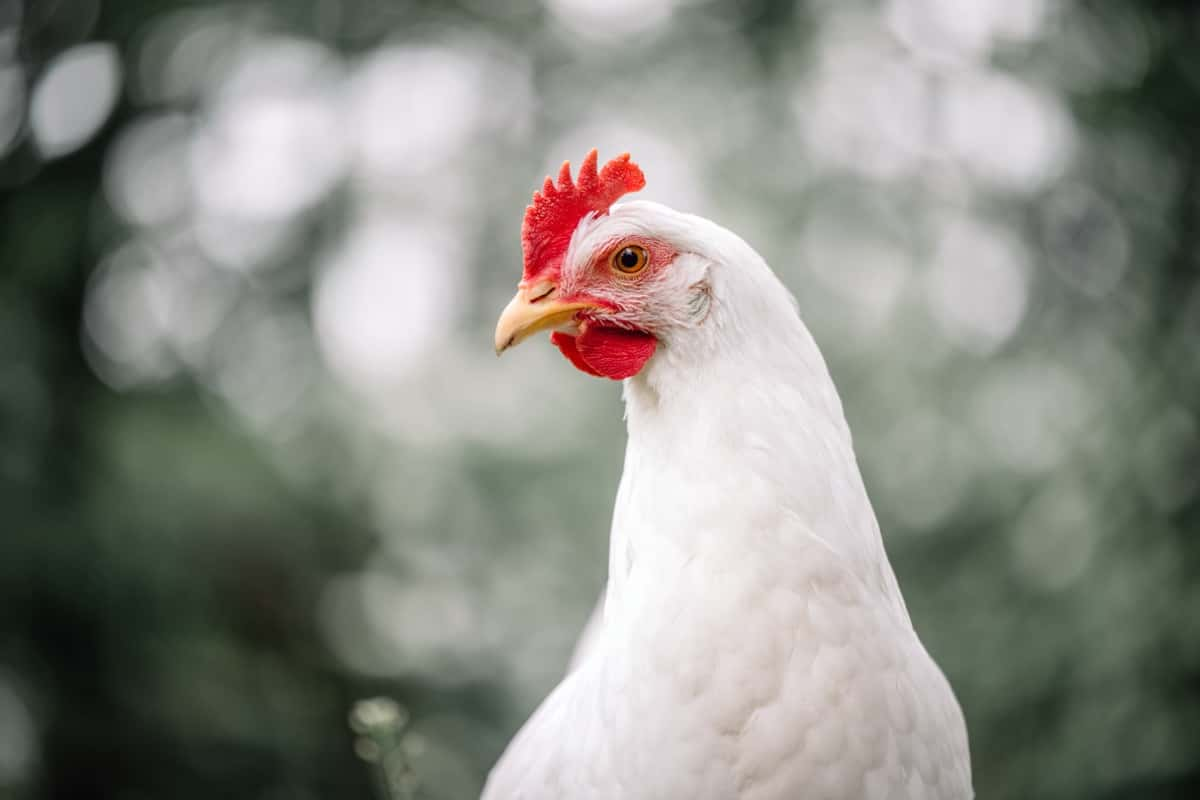
To select healthy Leghorn chickens, look for signs of good health, such as bright eyes, smooth beak, dry nostrils, red combs, clean, well-feathered body, normal breathing, and no signs of parasites, injuries, or diseases. Before buying, check the age, sex, and breed of the chickens. Younger chickens have smaller, paler combs, while males have larger combs, wattles, and tail feathers. The breed of Leghorn chickens is determined by their earlobe color, leg color, egg color, and feather color.
Housing for Leghorn Chickens
Leghorn chickens are active, hardy birds that can tolerate hot climates but require a lot of space to roam and forage. To keep them safe and comfortable, a coop should meet their needs and preferences. The coop should have at least 3 square feet of floor space per bird inside and 10 square feet of run space per bird outside. It should also provide enough roosting space and nesting boxes to avoid crowding and stress.
Ventilation is crucial for leghorns to handle heat well and prevent respiratory problems. The coop should have windows or vents that allow fresh air to circulate drafts and predators. The run should be fenced with chicken wire or electric netting and covered with a roof or netting to prevent aerial attacks.
Comfort is essential for leghorns, and the coop should have a layer of bedding that absorbs moisture and odors, regular bedding changes, perches, ramps, ladders, or platforms for exercise and exploration, and shade and shelter from rain, snow, and wind. Enrichment is essential for leghorns, as they need stimulation and entertainment. To keep them busy, provide toys or treats like cabbage, grapes, or suet feeders, dust baths, scratch grains, or fresh greens.
Feeding Leghorn Chickens
Leghorn chickens are active and energetic birds that have a balanced diet to stay healthy and productive. They should be fed a high-quality layer feed that contains at least 16% protein and adequate amounts of calcium, phosphorus, and other minerals. Supplement your diet with fresh greens, fruits, vegetables, and occasional treats with mealworms or sunflower seeds.
Watering Your Leghorn Chickens
Water is essential for Leghorn chickens, as it helps them regulate their body temperature, digest their food, and produce eggs. You should provide your chickens with clean and fresh water at all times and change it daily. You can use a gravity-fed waterer, a nipple drinker, or a bowl to water your chickens, but make sure they are easy to access and clean. You should also avoid using metal containers, as they can rust or freeze in cold weather.
Health and Wellness
Leghorn chickens are generally healthy and hardy birds, but Still suffer from some common health issues and diseases. Some of the factors that can affect their health and wellness are stress, overcrowding, poor hygiene, inadequate nutrition, parasites, predators, and extreme weather. You should monitor your chickens regularly for signs of illness or injury, consult a veterinarian if needed.
Common Health Issues in Leghorn Chickens and Prevention
Some of the common health issues that can affect Leghorn chickens are respiratory infections, coccidiosis, egg binding, vent prolapse, bumblefoot, mites, and lice. You can prevent most of these problems by providing your chickens with a clean and spacious coop, proper ventilation, fresh water and food, regular deworming and dust bathing, and protection from predators. You should also isolate sick or injured birds from the rest to prevent the infection.
In case you missed it: 45 Days Chicken Business Plan: Revenue, Costs, and Profitability Analysis
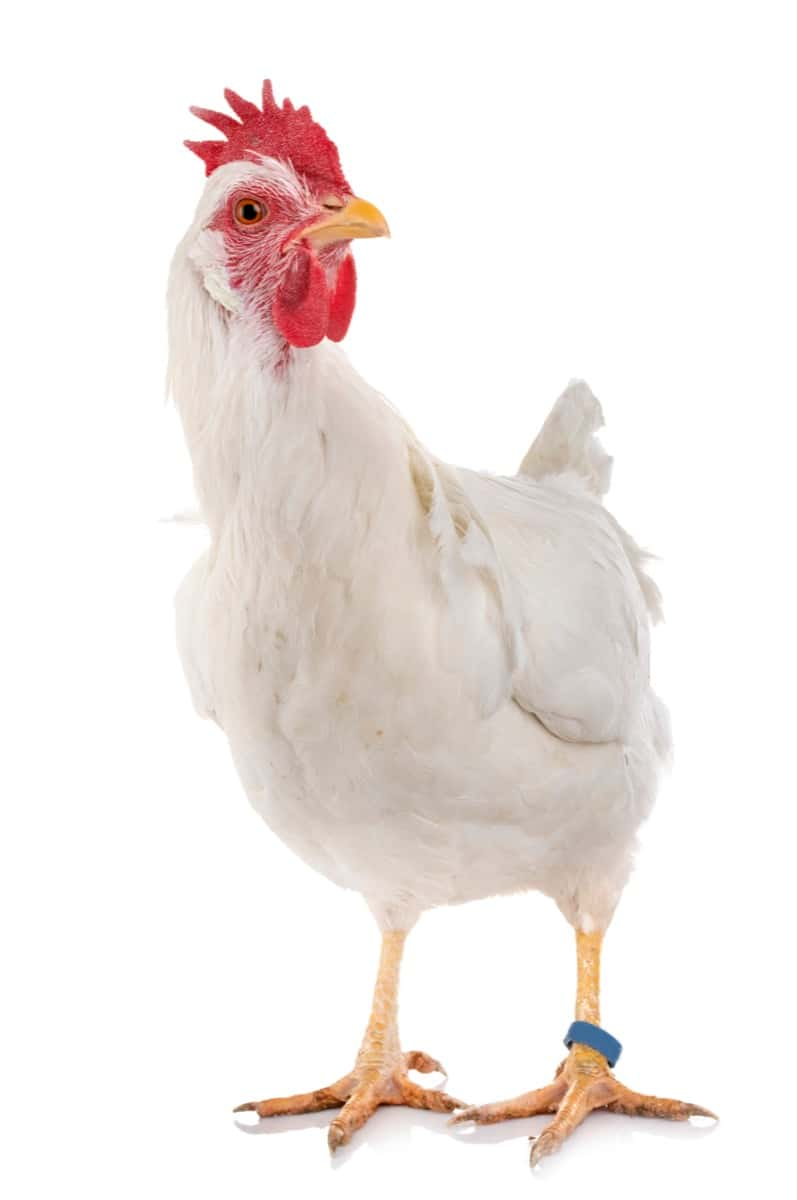
Regular Health Checks and Vaccination Schedule
Regular health checks on your Leghorn chickens to ensure they are in good condition. You can do this by observing their behavior, appearance, appetite, weight, droppings, feathers, eyes, ears, nose, mouth, comb, wattles, legs, and feet. You should also check their vent area for any signs of egg binding or vent prolapse.
It would help if you vaccinated your chickens against some common diseases such as Marek’s disease, Newcastle disease, and infectious bronchitis. You can consult your local veterinarian or poultry extension agent for the recommended vaccination schedule in your area.
Egg Production from Leghorn Chickens
Leghorn chickens are excellent egg layers that can produce up to 300 eggs per year. They start laying eggs at around 18-20 weeks of age and continue until they are about 4-5 years old. Their eggs are large and white, with a smooth and glossy shell. They usually lay their eggs in the morning or early afternoon and prefer a dark and quiet nesting box.
Maximizing Egg Production in Leghorn Chickens
If you want to maximize the egg production of your Leghorn chickens, you should provide them with optimal conditions and care. Some of the factors that can affect their egg production are light, temperature, nutrition, water, stress, and health. You should ensure that your chickens get at least 14 hours of light per day, either natural or artificial.
You should also keep them in a comfortable temperature range of 18-24°C (65-75°F) and avoid exposing to extreme heat or cold. It would help if you fed them a high-quality layer of feed that contains enough protein and calcium for egg production. You should also provide them with fresh water at all times and avoid any sources of stress, such as noise, predators, or aggression.
Understanding the Egg Laying Cycle and How to Support It
Hormones and light levels influence Leghorn chickens’ egg-laying cycle. It consists of four phases: follicle development, ovulation, egg formation, and egg laying. The follicle development phase lasts ten days and involves egg yolk growth. The ovulation phase lasts 15 minutes, followed by egg formation, which takes 25 hours and includes egg white, membrane, shell, and cuticle. The egg-laying phase lasts 2 minutes. Supporting the egg-laying cycle can be achieved by providing adequate light, nutrition, water, nesting boxes, and calcium supplements.
Breeding Leghorn Chickens
The Basics of Breeding Leghorn Chickens
Leghorn chickens are sexually mature at around six months of age, but they are not ready for breeding until they are at least 8-10 months old. You should keep a ratio of one rooster to 10-15 hens for optimal fertility. You should also separate the breeding flock from the rest of the chickens and provide them with a clean and spacious coop, fresh water and food, and nesting boxes. You should collect the eggs daily and store them in a cool and dry place until you are ready to incubate them.
Genetics and Selecting Breeding Stock
Leghorn chickens have a dominant white gene that masks any other color genes they may carry. This means that most of the offspring will be white, regardless of the color of the parents. However, some of the offspring may show traces of other colors, such as black, brown, or red, depending on the recessive genes they inherit. You should select the breeding stock based on their health, productivity, conformation, and temperament. It would help if you also avoided inbreeding, as it leads to genetic defects and reduced vigor.
In case you missed it: Pasture-Based Free-Range Chicken Farming: How to Implement for Improving Welfare and Quality
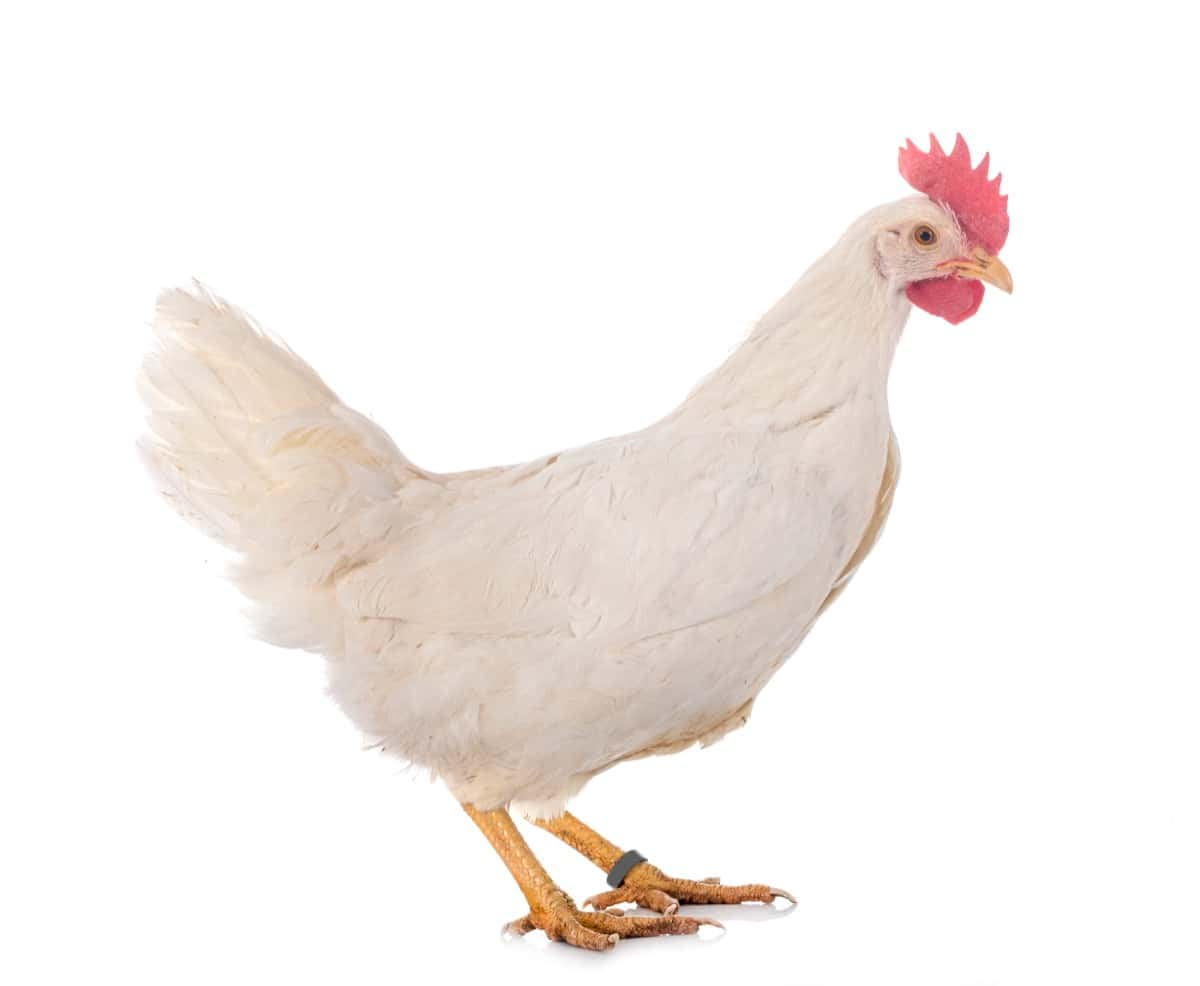
Raising Leghorn Chicks
Incubation and Hatching Tips for Leghorn Eggs
Leghorn eggs can be incubated artificially or naturally. An incubator should be set at 37.5°C, with humidity at 50-60% and low ventilation. Eggs should be turned three times daily and stopped three days before hatching. Candles should be used periodically to check fertility. A broody hen should be chosen for its calmness, cover 10-15 eggs, and provide a clean nesting box, fresh water, food, and protection. The hatching process for Leghorn chicks can take up to 24 hours and involves pipping, zipping, and hatching.
Brooding and Care for Young Chicks
Leghorn chicks can be brooded artificially or naturally. For artificial brooding, set the temperature at 35°C for the first week and gradually reduce it to room temperature. Provide chicks with a clean brooder box, fresh water, food, bedding, heat source, thermometer, and predator protection. Monitor chick behavior, temperature, weight, growth, and health daily. Introduce chicks to perches, grass, and greens gradually. If using a broody hen, allow her to care for chicks and provide a separate coop or pen.
Understanding Leghorn Chicken Behavior
Leghorn chickens are alert, flighty, and skittish birds that can be easily startled by loud noises or sudden movements. They are not friendly but can be tamed and socialized with patience and positive reinforcement. They are competitive and hierarchical, establishing a pecking order among themselves, and can be aggressive towards weaker or lower-ranking animals.
Seasonal Care for Leghorn Chickens
Preparing Your Leghorn Chickens for Winter
Winter can be challenging for Leghorn chickens, who have large combs and wattles prone to frostbite. To prepare them:
- Provide a well-insulated and ventilated coop with enough space for each bird to roost comfortably.
- Add extra bedding to the coop floor to keep it warm and dry, and change it regularly to prevent mold and parasites.
- Install a heat lamp or infrared chick heater in the coop if the temperature drops below freezing, but monitor it with a thermometer.
- Apply petroleum jelly or coconut oil to their combs and wattles to prevent frostbite.
- Provide fresh water at all times and prevent freezing using a heated waterer or apple cider vinegar.
- Reduce stress and boredom by providing entertainment like toys, treats, or perches and allowing them out for supervised free-ranging time on sunny days.
Summer Care Tips to Keep Your Chickens Cool and Comfortable
Summer can be stressful for Leghorn chickens, as their white feathers reflect heat, leading to overheating. To keep them cool and comfortable:
- Provide shade and ventilation in the coop and run, using tarps, umbrellas, trees, fans, windows, and spraying water on the roof.
- Keep fresh water available, adding electrolytes or probiotics to boost immunity and hydration.
- Avoid feeding too much protein or corn, instead opting for fruits and vegetables.
- Handle your chickens in cooler times, either early in the morning or late in the evening.
- Watch for signs of heat stress, like panting, drooping wings, lethargy, or reduced egg production, and take immediate action by moving them to a cooler place, spraying them with cool water, or applying wet towels to their heads and feet.
Feather Care and Molting
Managing Molting in Leghorn Chickens
Molting is a natural process for Leghorn chickens, but it can also be stressful and uncomfortable. To manage molting, be patient and understanding, as they may lose feathers and stop laying eggs. Provide extra protein and calcium to help them grow new feathers faster and maintain eggshell quality.
In case you missed it: The Genetic Revolution Enhancing Chicken Farming Through Genetics
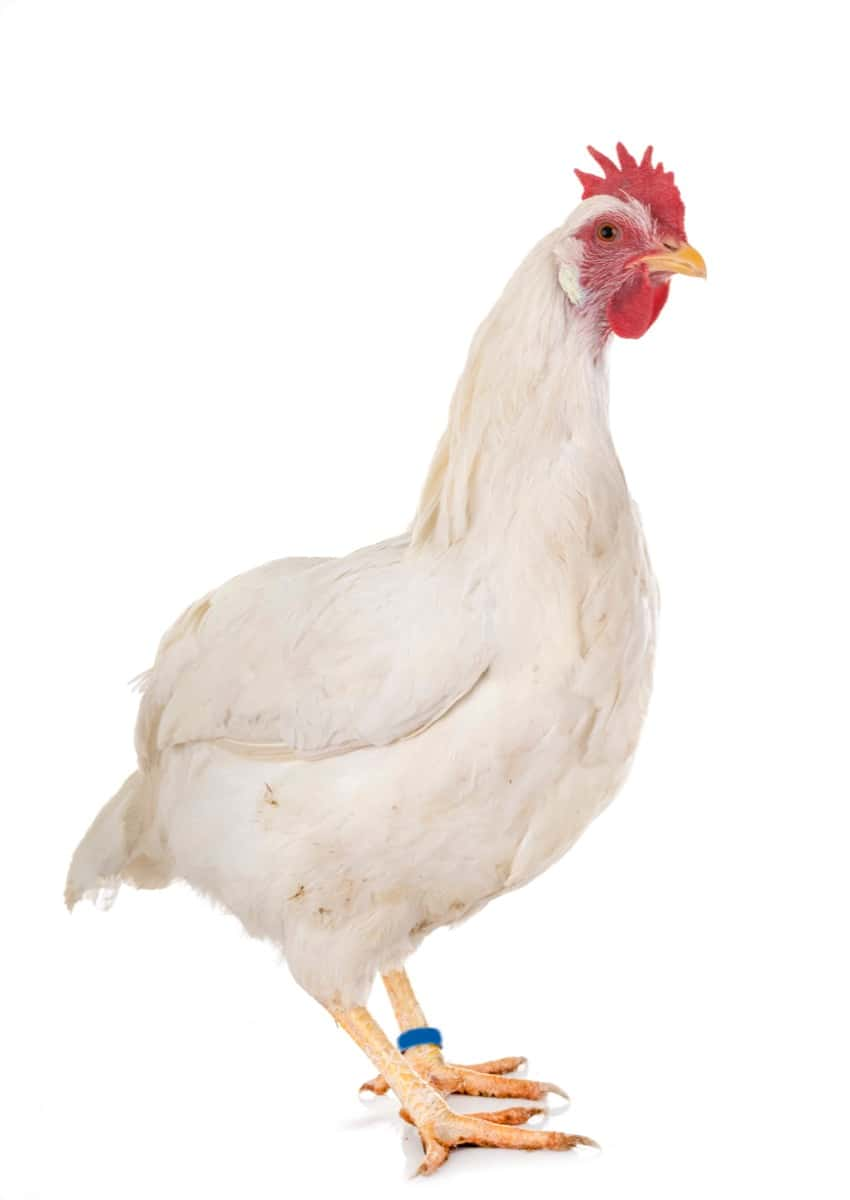
Offer fresh fruits and vegetables or supplements to boost their immune system. Provide extra comfort and warmth by providing a cozy coop with enough bedding and roosting space. If the temperature drops below 50°F, add heat sources like heat lamps or infrared chick heaters. Remember that molting is a temporary process and should be managed with patience and understanding.
Feather Care Tips to Keep Your Birds Looking Their Best
Feathers are essential for chickens, as they enhance their appearance, attract mates, and deter predators. To maintain their feathers:
- Keep them clean and dry, using a dust bath or water bath to remove dirt and parasites.
- Avoid soap or shampoo, as it can strip feathers of their natural oils.
- Trim broken, frayed, or overgrown feathers gently, avoiding skin or blood feathers.
- Trim feathers around eyes, ears, vents, or feet if they interfere with vision, hearing, hygiene, or mobility.
- Ensure chickens are healthy and happy by providing a balanced diet, clean water, adequate space, proper ventilation, safe shelter, regular health checks, and social interaction.
These tips will help keep your chickens’ feathers looking their best and promote their overall health.
Pest and Predator Management
Pests and predators pose significant threats to chickens’ health and safety, causing diseases, injuries, and even death. To prevent these threats, keep your coop and run clean and tidy, removing any harboring pests and using natural remedies like DE, garlic, ACV, or herbs. Secure the coop and run with no gaps or holes, using hardware cloth to cover the walls and roof and installing locks on doors and windows.
Keep your chickens alert by providing hiding places, deterrents like bells or shiny objects, and keeping a rooster in your flock to warn them of potential threats. Building a strong, secure coop that runs with no gaps or holes and using hardware cloth to cover the walls and roof can help protect your chickens from predators.
Dietary Supplements and Treats
Best dietary supplements and treats for leghorn chickens, such as calcium, protein, vitamins, minerals, herbs, fruits, and vegetables. These supplements and treats can help improve the health, productivity, and happiness of your leghorn chickens. Remember to consult your veterinarian before introducing new supplement or treat to your flock and to follow the recommended dosage and frequency.
In case you missed it: How to Manage Chicken Feed Costs: Economic Strategies for Nutritious Poultry Diets
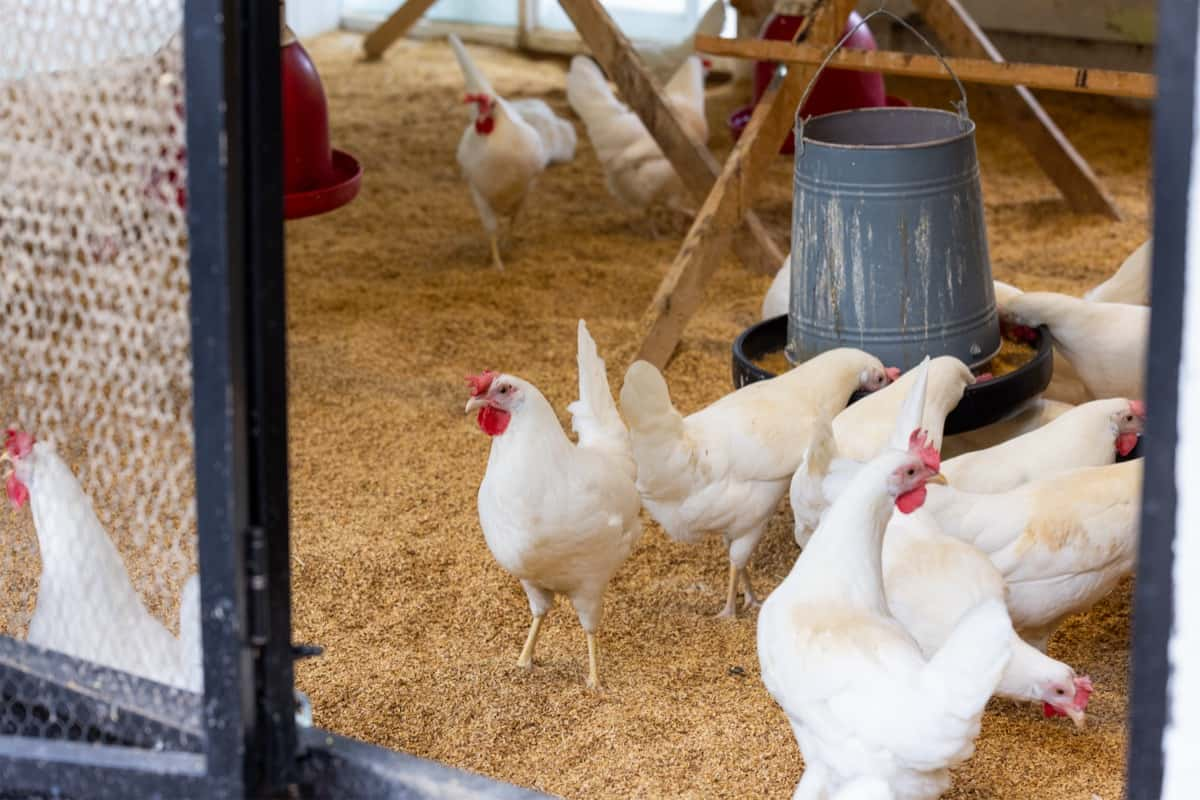
Conclusion
Mastering the art of raising Leghorn chickens involves a holistic approach. From meticulous care and nutrition to strategic breeding and coop design, this guide empowers you. Elevate your flock management, maximize egg yield, and foster healthy, thriving Leghorn chickens with the knowledge gained from this comprehensive guide.
- Types of Pesticides Used in Agriculture: A Beginner’s Guide
- Economical Aquaculture: A Guide to Low-Budget Fish Farming
- 15 Common Planting Errors That Can Doom Your Fruit Trees
- How to Make Houseplants Bushy: Effective Tips and Ideas
- Innovative Strategies for Boosting Coconut Pollination and Yield
- Pollination Strategies for Maximum Pumpkin Yield
- The Complete Guide to Chicken Fattening: Strategies for Maximum Growth
- Natural Solutions for Tulip Problems: 100% Effective Remedies for Leaf and Bulb-Related Issues
- Revolutionizing Citrus Preservation: Towards a Healthier, Greener Future
- Natural Solutions for Peony Leaf and Flower Problems: 100% Effective Remedies
- Maximizing Profits with Avocado Contract Farming in India: A Comprehensive Guide
- Natural Solutions for Hydrangea Problems: 100% Effective Remedies for Leaf and Flowers
- The Ultimate Guide to Choosing the Perfect Foliage Friend: Bringing Life Indoors
- From Sunlight to Sustainability: 15 Ways to Use Solar Technology in Agriculture
- The Ultimate Guide to Dong Tao Chicken: Exploring from History to Raising
- The Eco-Friendly Makeover: How to Convert Your Unused Swimming Pool into a Fish Pond
- Mastering the Art of Delaware Chicken Farming: Essentials for Healthy Backyard Flocks
- 20 Best Homemade Fertilizers for Money Plant: DIY Recipes and Application Methods
- How to Craft a Comprehensive Free-Range Chicken Farming Business Plan
- Brighten Your Flock: Raising Easter Egger Chickens for Beauty and Bounty
- How to Optimize Your Poultry Egg Farm Business Plan with These Strategies
- Subsidy for Spirulina Cultivation: How Indian Government Schemes Encouraging Spirulina Farmers
- Ultimate Guide to Raising Dominique Chickens: Breeding, Feeding, Egg-Production, and Care
- Mastering the Art of Raising Jersey Giant Chickens: Care, Feeding, and More
- Ultimate Guide to Raising Legbar Chickens: Breeding, Farming Practices, Diet, Egg-Production
- How to Raise Welsummer Chickens: A Comprehensive Guide for Beginners
- How to Protect Indoor Plants in Winter: A Comprehensive Guide
- Ultimate Guide to Grow Bag Gardening: Tips, Tricks, and Planting Ideas for Urban Gardeners
- Guide to Lotus Cultivation: How to Propagate, Plant, Grow, Care, Cost, and Profit
- Agriculture Drone Subsidy Scheme: Government Kisan Subsidy, License, and How to Apply Online
- Ultimate Guide to Raising Araucana Chickens: Breed Profile, Farming Economics, Diet, and Care
- Bringing Hydroponics to Classroom: Importance, Benefits of Learning for School Students
- Ultimate Guide to Raising Polish Chickens: Breed Profile, Farming Economics, Diet, and Care
- Ultimate Guide to Raising Australorp Chickens: Profile, Farming Economics, Egg Production, Diet, and Care
- Silkie Chicken Farming: Raising Practices, Varieties, Egg Production, Diet, and Care
- Sussex Chicken Farming: Raising Practices, Varieties, Egg Production, Diet and Care